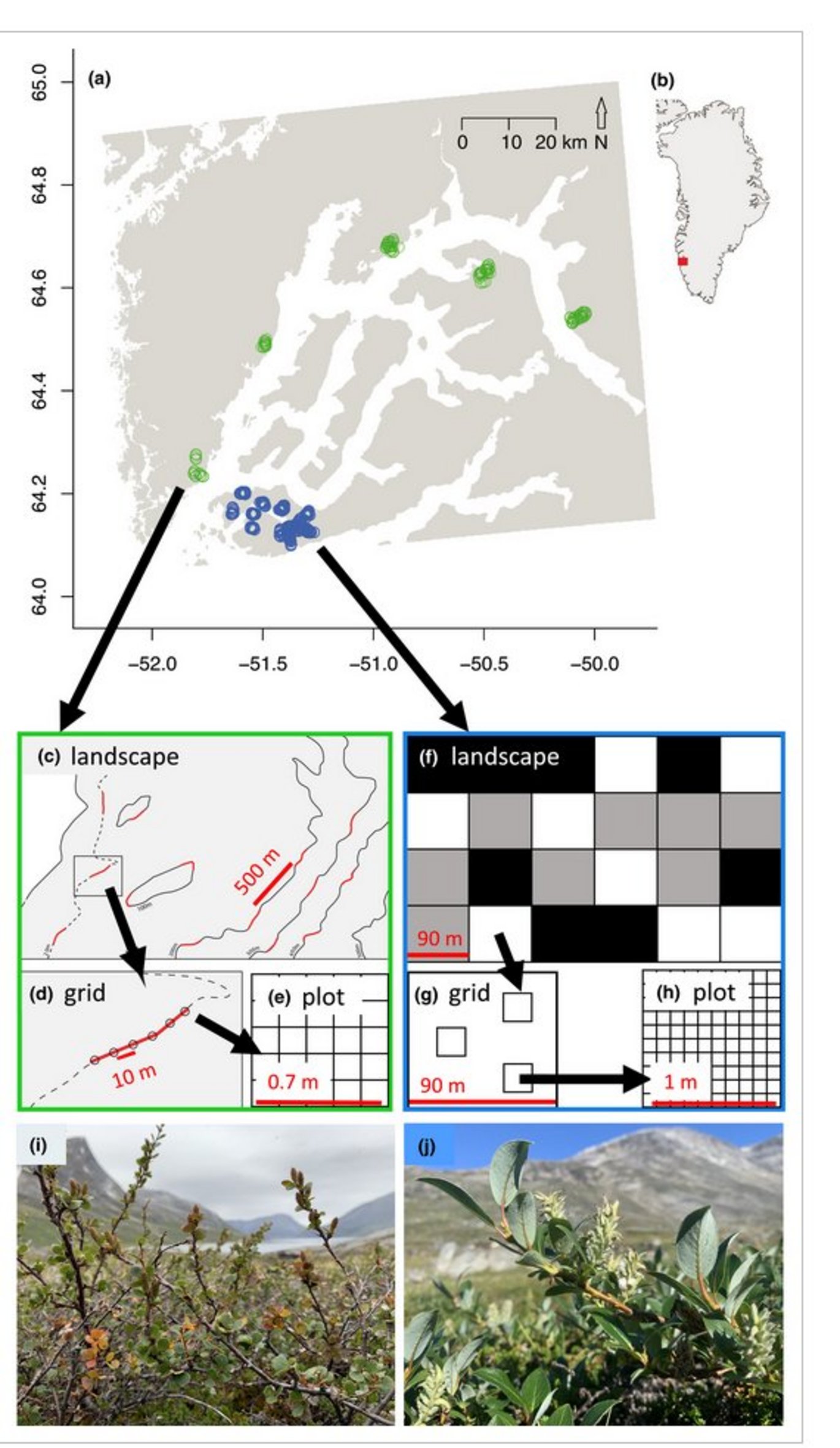High resolution species distribution and abundance models cannot predict separate shrub datasets in adjacent Arctic fjords
New publication by Nathalie Isabelle Chardon, Jacob Nabe-Nielsen, Jakob Johan Assmann, Ida Bomholt Dyrholm Jacobsen, Maya Guéguen, Signe Normand, Sonja Wipf

Abstract:
Aim
Improving species distribution models (SDMs) and species abundance models (SAMs) of woody shrubs is critical for predicting biodiversity changes in the Arctic, which is experiencing especially high warming rates. Yet, it remains relatively unexplored if SDMs and SAMs can explain local scale patterns. We aim to identify predictor differences for the distribution versus abundance of two widespread Arctic shrub species with high resolution models and to compare validation approaches to assess the models’ predictive abilities.
Location
Nuup Kangerlua (NK) and Kangerluarsunnguaq (K), two adjacent fjords in Southwest Greenland.
Methods
We conducted two separate field surveys in either fjord to construct high resolution (~90 m) SDMs and SAMs for Betula nana and Salix glauca, analysing the predictive influences of local scale climate, topography and soil moisture indicators. We then alternatively trained and validated models in either NK or K fjord and compared these results with the common split-sample validation approach. Finally, we assessed if including local scale biotic predictors improves SAM performance.
Results
Temperature extremes and precipitation best predicted the distributions of both species, whereas insolation and soil moisture indicators best predicted abundances. Compared to split-sample validation, both SDM and SAM performance was substantially reduced with separate survey validation. Regardless of validation approach, models performed poor to moderately well, and including local scale biotic parameters improved SAM performance.
Main conclusions
Substantial differences in model performance between validation approaches highlight the usefulness of using a separate survey for validating model predictive performance. We discuss various factors that might have caused poor model performance, such as not capturing all relevant predictors or enough local scale heterogeneity in predictor or response variables. We emphasise the need to include predictors relevant at the spatial scale of study, such as local scale biotic interactions, for improved predictions at high spatial resolution.
